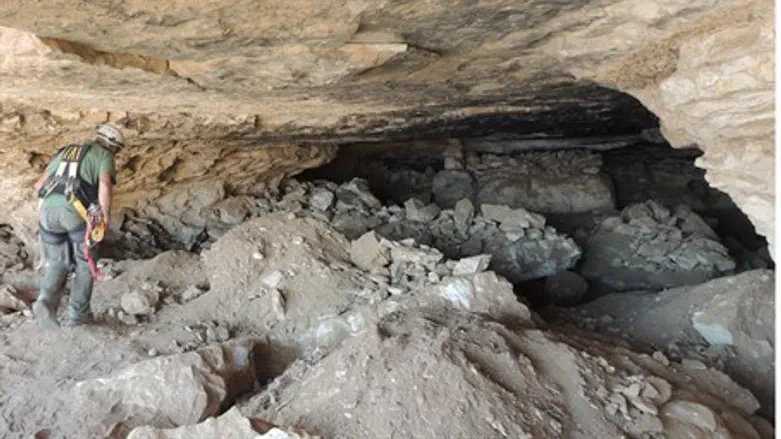
Be'er Sheva Magistrate's court sentenced six Arab antiquities thieves to 18 months in jail each, along with a fine totaling 12,000 NIS, for plundering one of the most important archaeological sites ever discovered in the Judean Desert.
The robbers, all from the village of Seir near Hevron, were caught in the act last November by inspectors from the Israel Antiquities Authority’s Unit for the Prevention of Antiquities Robbery while plundering an ancient cave in the cliffs above Nahal Ze’elim in the Judean Desert.
Israel Antiquities Authority inspectors believe the accused were looking for ancient scrolls hidden during the Bar Kokhba period.
As part of a plea bargain the six, who have been detained in prison since November, admitted to damaging an ancient site, excavating an ancient site without a permit, conspiring to commit a crime, and unlawfully residing in Israel.
According to an indictment served last December, the accused reached Nahal Ze’elim in the Judean Desert with the express purpose of entering the ancient caves and unearthing antiquities thousands of years old. The thieves were equipped with ropes, excavating equipment, a large quantity of food, and a sophisticated metal detector.
The gang then conducted an illicit excavation in an ancient cave known by archaeologists as the "Cave of the Skulls."
They were apprehended after a surveillance period while climbing back up the cliff face to rejoin their vehicle. Plundered archaeological finds found with their equipment included a lice comb made of wood dating from the Early Roman period.
The site, which is a declared antiquities site, contains human settlement remains from two ancient periods – the Chalcolithic period (6,000 years ago) and the Roman period (2,000 years ago). It is located in the cliff face 150 meters above the Nahal Ze’elim valley bottom and some 70 meters below the top of the cliff. It can only be reached by foot via an extremely dangerous route, past a sheer rock face and along a narrow gazelle path above a scree slope.
The robbers caused irreparable damage to the cave by destroying the archaeological strata, digging deep holes, and scattering potsherds throughout the site. The ruling stated that the robbers had “worked as an organized team of professional criminals who are experts in this field, who collected information and planned meticulously before coming to perpetrate the crimes.”
According to Amir Ganor, Director of the Unit for the Prevention of Antiquities Robbery in the Israel Antiquities Authority, “The Judean Desert caves have yielded some of the most important archaeological finds we know, with historical, religious, and research significance for all mankind.
"The accused have seriously damaged a vitally important antiquities site in the Judean Desert."
Ganor also outlined the difficulties faced by the IAA in protecting such important Israeli heritage sites.
"The detection and prevention of antiquities robbery in the Judean Desert cliffs is a complex task that has faced the Antiquities Authority for many years," he explained. "We also have to contend with the region’s difficult topography and climate.
"Patrolling the Judean Desert requires us to access the cliff caves by rappelling down ropes, overcoming extreme weather conditions and also frequently confronting situations that endanger our personal security and safety."
Nevertheless, he said the IAA is "satisfied with our success in apprehending this band of robbers and hope that the sentence they have been given will deter others from damaging the history belonging to us all.
"For our part, here in the Antiquities Authority we shall continue to do all we can to preserve mankind’s ancient cultural treasures for future generations."